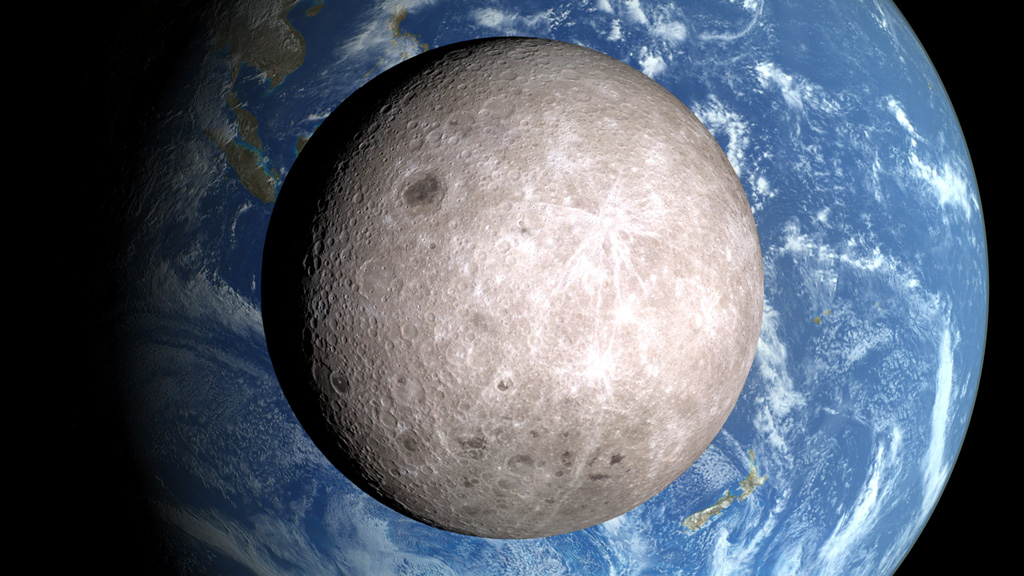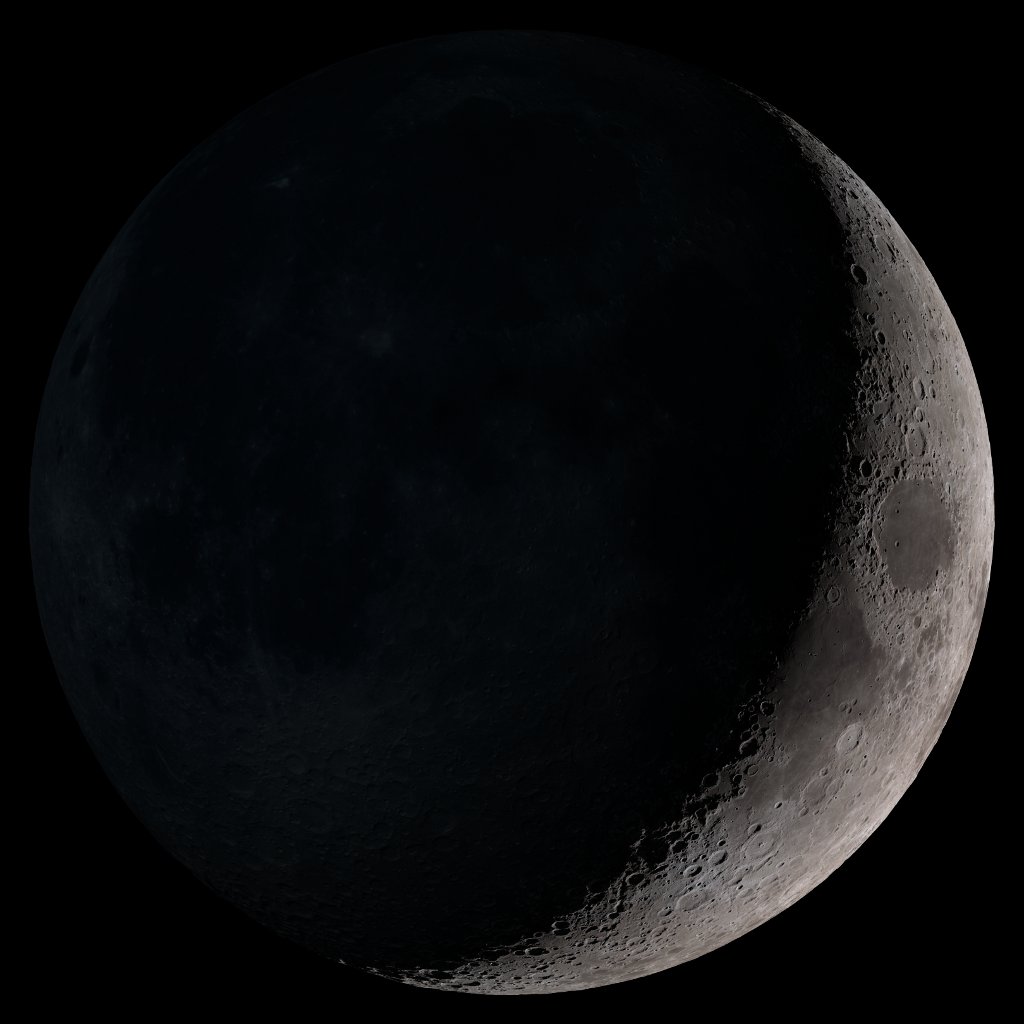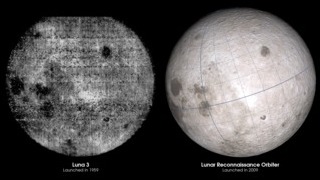Moon Phase and Libration, from the Other Side
This narrated video introduces two views of the Moon's far side. Transcript.
This video is also available on our YouTube channel.
A number of people who've seen the annual lunar phase and libration videos have asked what the other side of the Moon looks like, the side that can't be seen from the Earth. This video answers that question. (Update: The video was selected for the SIGGRAPH 2015 Computer Animation Festival.)
Just like the near side, the far side goes through a complete cycle of phases. But the terrain of the far side is quite different. It lacks the large dark spots, called maria, that make up the familiar Man in the Moon on the near side. Instead, craters of all sizes crowd together over the entire far side. The far side is also home to one of the largest and oldest impact features in the solar system, the South Pole-Aitken basin, visible here as a slightly darker bruise covering the bottom third of the disk.
The far side was first seen in a handful of grainy images returned by the Soviet Luna 3 probe, which swung around the Moon in October, 1959. Lunar Reconnaissance Orbiter was launched fifty years later, and since then it has returned hundreds of terabytes of data, allowing LRO scientists to create extremely detailed and accurate maps of the far side. Those maps were used to create the imagery seen here.
In the first of the two viewpoints, the virtual camera is positioned along the Earth-Moon line at a distance of 30 Earth diameters from the Moon and 60 ED from the Earth. The focal length is equivalent to a 2000 mm telephoto lens on a 35 mm SLR, making the horizontal field of view about one degree. The view is consistent with what you might see through an amateur telescope at these distances.
In the second view, the virtual camera is much closer to the Moon, only 1.2 ED, versus 31 ED from Earth. The camera focal length has been reduced to 80 mm, giving a 25° horizontal field. The result is an Earth that appears much smaller, more closely resembling the way it would look to the eye from the surface of the Moon.
A virtual telescopic view of the Moon from its far side, with the Earth looming in the background. The camera is fixed to the Earth-Moon line.
A view from the Moon's far side, using a short focal length that makes the distant Earth look small. The camera is fixed to the Moon's surface.
A virtual telescopic view of the Moon from its far side, with the Earth looming in the background. The camera is fixed to the Earth-Moon line. This version omits the card with the additional phase and libration graphics.
For More Information
See LRO Mission
Credits
Please give credit for this item to:
NASA's Scientific Visualization Studio
-
Animator
- Ernie Wright (USRA)
-
Producer
- David Ladd (USRA)
-
Scientists
- John Keller (NASA/GSFC)
- Noah Petro (NASA/GSFC)
Release date
This page was originally published on Wednesday, February 4, 2015.
This page was last updated on Wednesday, May 3, 2023 at 1:50 PM EDT.
Missions
This page is related to the following missions:Series
This page can be found in the following series:Tapes
The media on this page originally appeared on the following tapes:-
A View From The Other Side
(ID: 2015013)
Wednesday, February 4, 2015 at 5:00AM
Produced by - Marit Jentoft-Nilsen (RSIS)
Datasets used
-
DEM (Digital Elevation Map) [LRO: LOLA]
ID: 653 -
DE421 (JPL DE421)
ID: 752Planetary ephemerides
This dataset can be found at: http://ssd.jpl.nasa.gov/?ephemerides#planets
See all pages that use this dataset -
WAC 643nm High Sun Global Mosaic [LRO: LROC]
ID: 803
Note: While we identify the data sets used on this page, we do not store any further details, nor the data sets themselves on our site.




